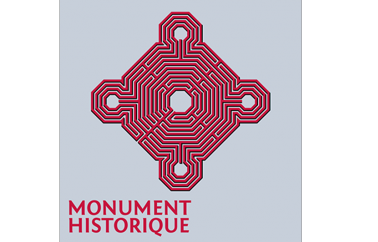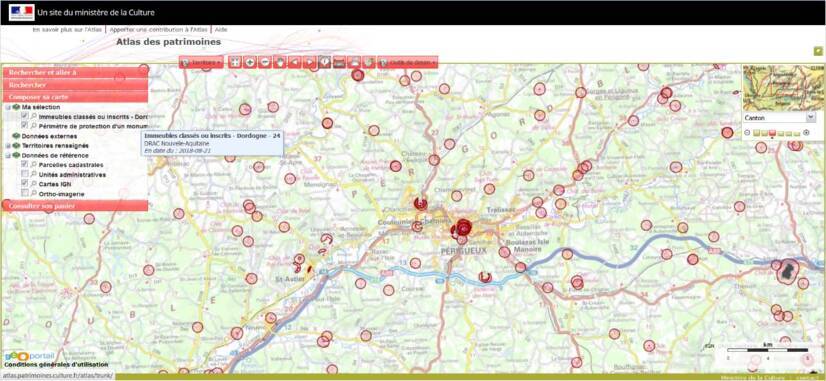
Protection under “Historic Monuments” - Ministry of culture, France
This example is taken from the situation in France, in view of the European Days in Florence.
Ministry of culture, France
Published - 03/12/2019
Protection under “Historic Monuments”
The protection of historical monuments is not a label but a public utility easement based on the heritage interest of a property, which is assessed by examining a set of historical criteria, artistic, scientific and technical. In particular, the concepts of scarcity, exemplary character, authenticity and integrity of assets are taken into account. Since the creation of the Historic Monuments Board in 1837, more than 44,000 buildings, nearly 300,000 movable objects, including 1,400 organs, have been protected by classification or inscription. Each year, approximately 300 buildings and 1,500 movable objects are protected as historic monuments.
Summary
What is Historical Monument Protection?
What are the benefits of “Historic Monument” protection?
What is the protection procedure?
What are the effects of protection?
The interactive map of the Atlas of Heritages
What is Historical Monument Protection?
Based on the defined criteria, the Regional Heritage and Architecture Commissions (RCAP) and the National Heritage and Architecture Commission (NPAC) provide advice on applications for protection. Buildings or parts of buildings, whether or not built (gardens, caves, parks, archaeological remains and grounds containing such remains) and movable objects may be protected (classification or inscription) (furniture by nature or buildings by destination, such as organs).
The «traditional» heritage (churches and castles as regards buildings, works of art and antique furniture as regards movable objects) remains very largely majority in all historical monuments, and continue to form the majority of protected assets each year. However, there has been a significant increase in the categories of protected property since the 1970s: gardens, buildings and movable objects of the XIXe and XXe centuries, industrial, scientific and technical heritage (factories, buildings and works of art railway, ships, trains, planes or automobiles, scientific collections) now occupy a significant place, although still a minority, among classified and listed goods.
What are the benefits of “Historic Monument” protection?
Protection provides the following benefits:
- Mention in communication documents issued by the Ministry of Culture;
- Possibility of obtaining specific road signs bearing the logo;
- Authorisation to use the logo on all communication and signalétique documents;
- Obligation to take account in the definition of local planning (PLS);
- Tax Benefits and Work Assistance Available
What is the protection procedure?
The request for protection may come from the owner of the property or, in the case of buildings, from any person having an interest in it (local authority, heritage association...). The initiative of protection can also be taken by the services of the State.
The regional prefect prepares a census file and consults the Regional Heritage and Architecture Commission (RCAP). This consultative body is made up of elected representatives, members of associations, qualified persons and representatives of the State. It comprises three sections, the first of which is responsible for the protection of real estate and the third for the protection of movable property. Each section of the RCAP has a permanent delegation which can either give an unfavourable opinion or decide to examine the dossier read in plenary committee.
The RCAP may issue either a negative opinion on the protection of the immovable or movable object, or a favourable opinion on its registration, accompanied where appropriate by a wish to be classified as a historic monument. On the basis of this opinion, which is advisory, the Prefect of the Region may reject the application for protection, issue an inscription order under the title of historical monuments, and forward a file to Headquarters for filing proposals, in the event of a RCAP filing wish.
The Minister responsible for Culture, after consulting the National Heritage and Architecture Commission (NFPC) on the classification proposals referred to him, decides on the classification or retention at registration. The classification is made by order of the Minister, in view of the agreement of the owner. In the event of failure to agree by the owner, the Minister may decide to initiate, after the CNPA has given its opinion, a procedure for automatic classification, which is decided by order in council of state.
In the event of an emergency, where the preservation of a property, immovable or movable object, or its maintenance in the national territory of a movable object, is threatened, the Minister of Culture may make a decision of classification authority. This decision places the property under classification for 12 months, giving the State services and the advisory committees time to examine the advisability of a final protection decision (registration or classification).
What are the effects of protection?
- Learn more about protecting buildings that are or are not built (link)
- Learn more about the protection of movable objects (link)
The interactive map of the Atlas of Heritages
The Atlas is a cartographic access (by location) to cultural and heritage information (ethnographic, archaeological, architectural, urban, landscape). It makes it possible to know, visualize, edit, contract and download geographical data on a territory, including the perimeter of protection of a historical monument.




